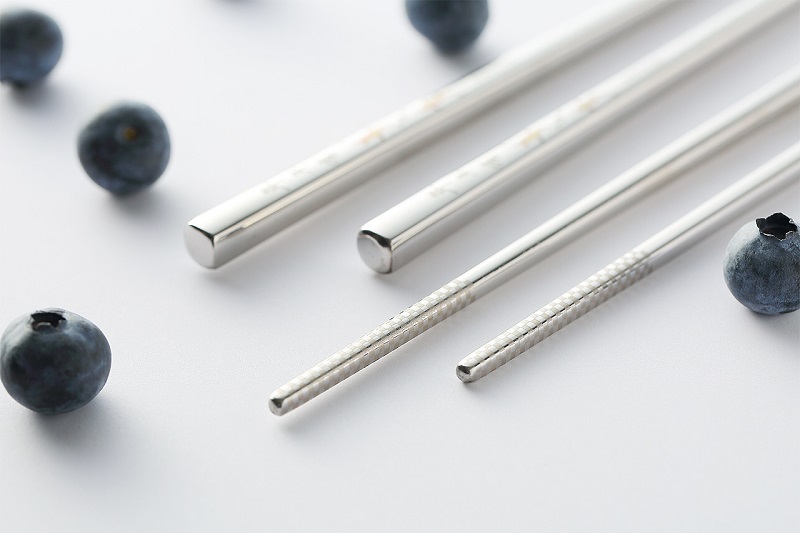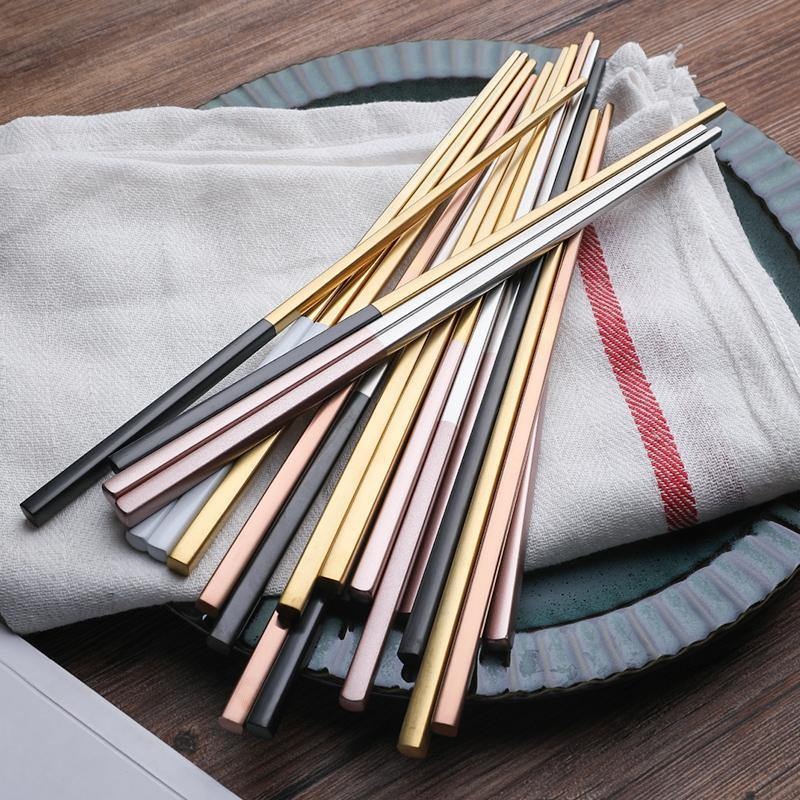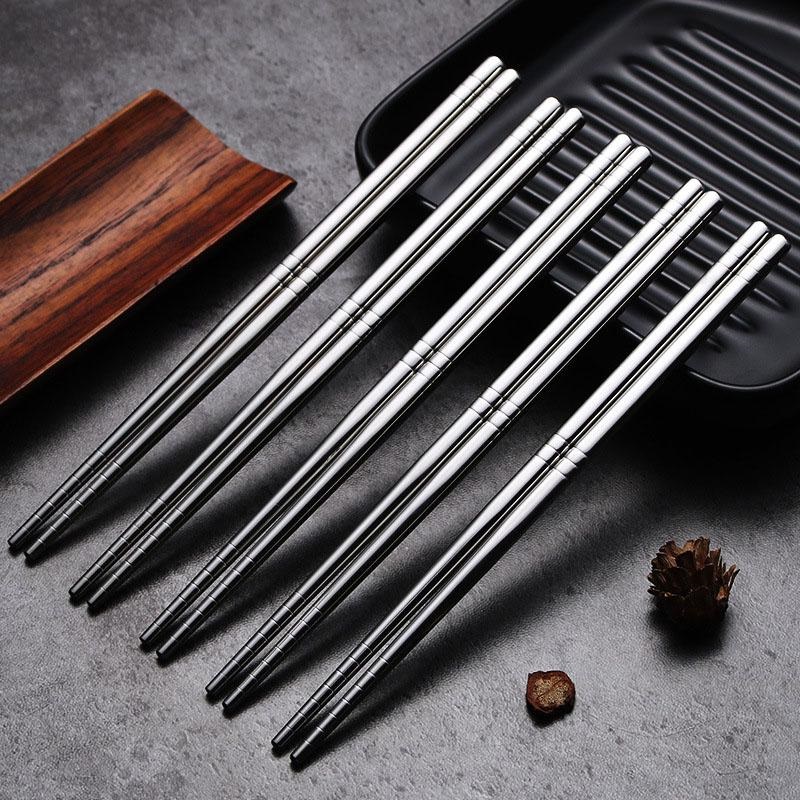

However, stainless steel chopsticks usually have thicker walls and heavier chopsticks compared to wooden and bamboo chopsticks. Chopsticks absorb more heat when in use, which can make them too hot. Also, when they hit the teeth, they taste bad and risk damaging the teeth. In addition, stainless steel chopsticks are also very expensive, which leads many families to abandon the choice of stainless steel chopsticks.
Smart manufacturers have come up with many ways to make stainless steel chopsticks more popular, especially to make stainless steel chopsticks resistant to scalding and avoid damaging teeth, while maintaining the advantages of no mold, no discoloration and no fading. One of them is to make the chopsticks hollow. The hollow stainless steel chopsticks absorb less heat, are light in weight, and have a good anti-scalding effect. In addition, they have become a heavily developed product by chopstick manufacturers due to their material saving and cheaper than solid chopsticks.

So how are hollow stainless steel chopsticks made?
First step is to understand the shape and structure of chopsticks. At present, there are mainly two types of stainless steel hollow chopsticks on the market. The first is that the outer surface is cylindrical or conical as a whole; the second is that the outer surface is irregular. The first type of chopsticks is easy to roll and has poor grip or grip and positioning. In the second type of chopsticks, the outer surface is divided into two parts: a dish-holding part and a hand-holding part, wherein the dish-holding part is a circular outer surface, and the holding part is a square outer surface.
The second step is the manufacturing, drying and polishing process of stainless steel chopsticks, mainly including the forming and polishing process of chopsticks. The so-called blanking is to cut a stainless steel tube of a certain thickness and length into a blank section. The so-called pressure forming is to press the blank piece by piece through the equipment to change the shape of the chopsticks to obtain the desired shape. This is the most technical part of chopstick manufacturing. Commonly used processes include forging, stamping, hydroforming, etc. The welding head is used to heat and melt the two parts of the chopstick structure obtained by pressure forming to form a seal. So far, the chopsticks themselves have basically been made to be used as chopsticks. Subsequent grinding, polishing and other processes are auxiliary manufacturing processes to increase the aesthetics and comfort of chopsticks and promote sales.
Generally speaking, while hollow stainless steel chopsticks are simple, they are not at all easy to manufacture. Small chopsticks can also reflect a country's industrial strength. With the development of science and technology, various improvements have appeared in stainless steel chopsticks: antibacterial, wear resistance, high temperature resistance, etc. Consumers have more and more choices. Only by knowing some knowledge about the materials and manufacturing of chopsticks can we make a better judgment and will not be cheated by merchants to spend money.
The Application and Classification of Silicon Steel Sheets in Transformer Cores
2024-11-26Stainless Steel Decorative Plate Classification
2023-02-22Research on Transformer Core Optimization Design Based on Electromagnetic Simulation
2025-01-11Why the transformer core to use square electrical steel sheet?
2023-11-11What are the design features of modern stainless steel screens?
2022-07-28Special steel for energy (High strength non-oriented silicon steel)
2024-08-19







